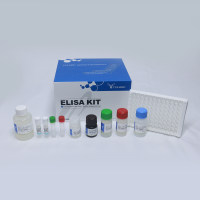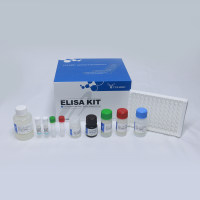Targeting Tumor Vasculature Using VEGF-Toxin Conjugates
互联网
互联网
相关产品推荐

促销中大鼠肿瘤坏死因子α(TNF-α)/Rat TNF-α/tumor necrosis factor (TNF superfamily,member 2)/Tnf;Tnfa;Tnfsf2;Tumor necrosis factor;Cachectin;TNF-alpha;Tumor necrosis factor ligand superfamily member 2;TNF-a) [Cleaved into: Tumor necrosis factor;membrane for/TNF/ELISA试剂盒
¥3420¥3800

Shiga toxin II subunit B 兔多抗 | Enterohemorrhagic E. coli (EHEC) stx2B Antibody, Rabbit PAb, Antigen Affinity Purified
¥800

Recombinant-Human-Reactive-oxygen-species-modulator-1ROMO1Reactive oxygen species modulator 1; ROS modulator 1 Alternative name(s): Epididymis tissue protein Li 175 Glyrichin Mitochondrial targeting GxxxG motif protein; MTGM Protein MGR2 h
¥9478

VEGF-A重组蛋白|Recombinant Human / Cynomolgus VEGF / VEGFA / VEGF165 Protein
¥780

促销中小鼠肿瘤坏死因子α(TNF-α)酶联免疫试剂盒Mouse Tumor necrosis factor α,TNF-α ELISA KIT
¥3420¥3800
相关问答

